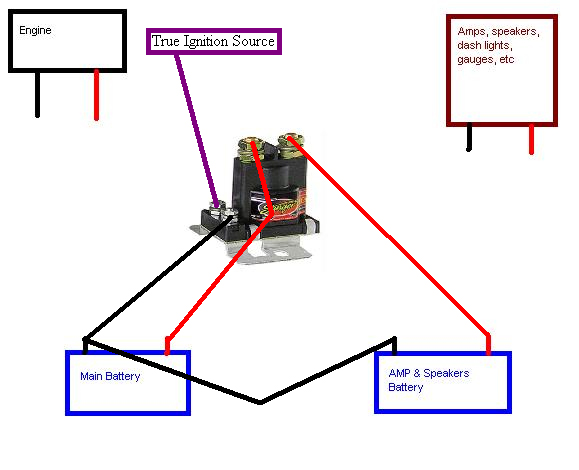
Compatible with all types of alternators and charging systems. Nature extracts a price for this by causing a voltage drop of about 0.7 Volts across the. The diodes will pass current from the charging source to the batteries, but will not pass current backward from one battery to the other or back to the charging source. "I am also noticing that perhaps my STARTING BATTERY is draining my house battery when I have the charger on - further leading me to believe there is something wrong with either the switch (which is turned "off" when I charge) or the isolator, or both. The battery system will remain separate while the ignition is off, preventing system drain. Battery Isolators are made with two or more silicon diodes that act like check valves. if battery #2 wasn't connected, I would not get a reading from my gauge if the switch was set to #2.ĭoes this help anyone troubleshoot whether it is my isolator, switch, both, (or something else?)Īnd just saw an typo in my previous post - what I meant to say above is: By the way: I learned that with 2 batteries in use, the batteries have to be of the same Ah. This relay has the highest current handling capability to date. Stinger's high current relays are the most efficient and reliable way to add secondary batteries to your system. (and if the switch is set to the #1 starting battery position, it will start)įor what's it's worth, this is a "new" problem, meaning that my switch previously worked - i.e. Charging the first batterie to 12.9 V or more will trigger the Isolator and the blue light will go on. Made of Water resistant black phenolic plastic, has a 100,000 mechanical cycle life and 500 amp contact rating. However, if the selector switch is off, the boat will not start, so I presume they go through the selector switch. Connect one of the small terminals to chassis Ground(-)Connect the other small terminal to a True Ignition source(+)The small terminals are non-directional and can be wired in either direction.True Ignition is a power source that turns on with ignition and stays on while cranking.OK - the wires from the starter go into a corrugated hose wrap and "dissapear." I am unable to determine by tracing whether they go directly to the batteries or through the selector switch.Connect one of the large terminals to the Primary Battery Positive (+)Connect the other large terminal to the Secondary Battery Positive(+)The large terminals are non-directional and can be wired in either direction.Power connections should be fused according to your application, no more than 18” from battery.No fuses are necessary for installations where the power cables are shorter than 18”, for example if the 2 batteries are side-by-side.When installed as described below, the two batteries are automatically connected when the vehicle is started and running and disconnected when the vehicle is of /rebates/&.com252fStinger-500-Amp-Relay-And-Isolator-SGP35252fp252f161933. Adding a Secondary Battery Using an isolator when adding a second battery will keep the batteries from discharging each other and allow you to run accessories from the Secondary Battery without draining the Primary Battery.500 Amps at 12V Continuous Power Handling. Does not create a voltage drop to the second battery like conventional isolators. Great for isolating a second batter making it dedicated to the stereo system.

Compatible with all types of alternators and charging systemsīattery Isolator / Relay Installation Instructions: Product Details: Mobile Audio Relay and Battery Isolator.This is because the charger doesnt charge both ways. If your starter battery died and you set the isolator to allow current to flow back to the starter battery, nothing would happen. However, the charger is only going to work one-way. High current relays are the most reliable and efficient way to add secondary batteries to your system The DC-DC charger would go downstream of the isolator. Ideal for 2nd Audio Battery Isolation from Vehicle Systems Reliable and Efficient Compatible with Most Alternators and Charging Systems Water Resistant.

500amp stinger battery isolator relay not charging battery series#
SGP35 Series relays can be used in applications requiring 500A current like motors, winches, commercial equipment, etc.


 0 kommentar(er)
0 kommentar(er)
